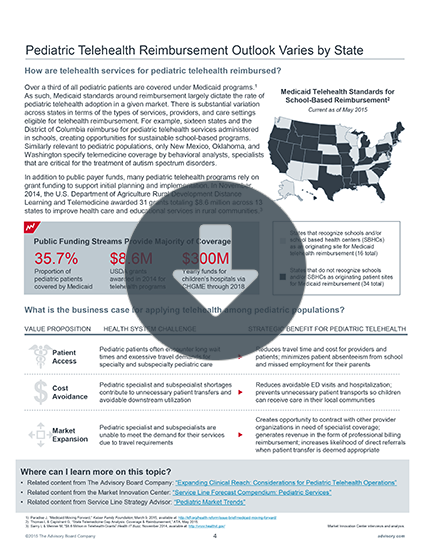Auto logout in seconds.
Continue LogoutNonprofit children's hospitals have seen median operating margins dwindle over the past two years, according to a new report from Fitch Ratings—a trend that would be exacerbated if the House GOP's budget proposal is enacted, Bruce Japsen writes for Forbes.
Budget details
The House Budget Committee last month unveiled a 10-year GOP budget proposal that calls for $1.5 trillion in cuts to spending on Medicaid and other health care programs over the next decade. The proposal also calls for implementing changes to Medicaid, including turning it into a block grant program and imposing caps on federal funding for the program, which eventually could result in payment cuts.
The proposal states that it would "institut[e] per capita caps for Medicaid—or optional block grants, if a state prefers—to put the program on a budget for the first time."
What the proposed budget could mean for children's hospitals
Fitch in a press release said, "Fitch's 'AA-' median rating for stand-alone children's hospitals is secure thanks to their robust liquidity, strong philanthropic support, solid operating margins and specialized clinical services relative to Fitch-rated general acute care hospitals." However, the report continued, "[M]edian operating margins have fallen in each of the last two years."
Fitch noted median operating margins for non-profit children's hospitals fell "sharply" from 6.1% in fiscal year 2016 to 4.5% in FY 2017. Median operating EBITDA dropped as well, from 12.6% to 11.9%.
According to Forbes, any Medicaid cuts would take a toll on children's hospitals, given that children make up the bulk of Medicaid beneficiaries. A report from the Chartis Group last year found children comprise 40 million out of 74 million Medicaid and CHIP beneficiaries.
Kevin Holloran, a senior director at Fitch Ratings, said, "Children's hospitals' high exposure to Medicaid," which pays for 50% of pediatric care at U.S. children's hospitals, "and inherent vulnerability to governmental funding cuts will always be a credit concern." However, he added that "the sector will continue to be insulated from any decreases in either Medicaid or supplemental reimbursement.
Separately, Mark Wietecha, CEO of the Children's Hospital Association, said, "Anytime you cut the Medicaid program either directly or through block granting, you are disproportionally impacting kids."
According to Forbes, children's hospitals already face a financial threat from the shift to risk-based contracts, which have lowered patient volume by emphasizing outpatient care. At the same time, an emphasis on population health means the patients who come to the hospital are sicker and have costlier conditions. "We have more Medicaid kids and we have sicker kids. Those two things put financial stress onto the hospitals," Wietecha said.
In addition, Holloran said, "Stand-alone children's hospitals may also be vulnerable to volume erosion over time as payors and patients become increasingly price-sensitive" (Japsen, Forbes, 7/8).
How to succeed under Medicaid risk—and meet the needs of your Medicaid patients
The Medicaid population presents a challenge for many health care providers. Low reimbursement rates coupled with high patient complexity are responsible for margin pressure.
Join our virtual expert panel discussion on Tuesday, August 14 to learn about key considerations for taking on Medicaid risk and setting up the right infrastructure to manage the population.
Don't miss out on the latest Advisory Board insights
Create your free account to access 1 resource, including the latest research and webinars.
Want access without creating an account?
You have 1 free members-only resource remaining this month.
1 free members-only resources remaining
1 free members-only resources remaining
You've reached your limit of free insights
Become a member to access all of Advisory Board's resources, events, and experts
Never miss out on the latest innovative health care content tailored to you.
Benefits include:
You've reached your limit of free insights
Become a member to access all of Advisory Board's resources, events, and experts
Never miss out on the latest innovative health care content tailored to you.
Benefits include:
This content is available through your Curated Research partnership with Advisory Board. Click on ‘view this resource’ to read the full piece
Email ask@advisory.com to learn more
Click on ‘Become a Member’ to learn about the benefits of a Full-Access partnership with Advisory Board
Never miss out on the latest innovative health care content tailored to you.
Benefits Include:
This is for members only. Learn more.
Click on ‘Become a Member’ to learn about the benefits of a Full-Access partnership with Advisory Board
Never miss out on the latest innovative health care content tailored to you.

